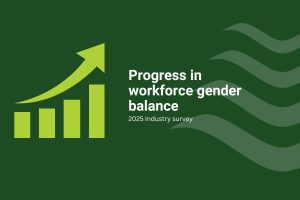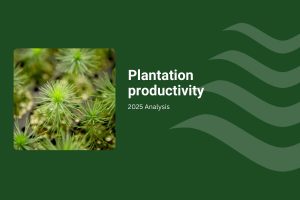Retail sales rose 0.3% in August, compared to July, feeding into annualized retail sales growth that moved up to 3.7%, compared with 2.0% in August 2017. Pointing to a possible driver of the return to retail sales growth, unemployment fell to 5.0% – theoretically full employment – in September, but even so, the RBA continues to toll the bell on under-employment and the directly related issue of wages growth.

To go straight to the dashboard and take a closer look at the data, click here.
It is now, as the chart shows, eight months since the last month of negative retail sales. Since December 2018, there have been months where retail sales were flat, but in general, the trend is up and the monthly growth is consistent and modest.
One factor that appears to have fed into more sustained growth in retail sales is employment levels.
To spend money on anything, you have to have a job. Recent good news in the Australian economy is that unemployment fell to just 5.0% in September 2018. That is good news for the economy and is shown in the chart below.
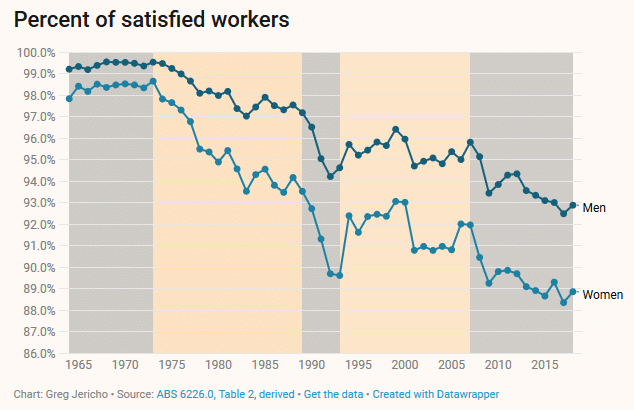
To go straight to the dashboard and take a closer look at the data, click here.
We have to be perpetually cautious about unemployment data because people who cease looking for work at all are excluded, even if they are just feeling discouraged in their search for work.
The other but less pressing reason for concern about unemployment data is that it masks under-employment data.
A modern issue if ever there was one, under-employment often comes about because a person has a job but wants or needs more hours. The gig economy is a good example, where a day’s work can last as little as an hour, or be broken into two ‘shifts’ of two hours each, at different ends of the day.
The chart below, from the RBA, shows underemployment rising, with its Deputy Governor, Guy Debelle commenting at a recent Citi Bank Conference that:
“While the underemployment rate has trended higher over time alongside the increasing prevalence of part-time work, movements in the unemployment rate remain the dominant driver of movements in the broader underutilisation rate. Hence, I still view the unemployment rate as the most useful summary indicator of the state of the labour market.”
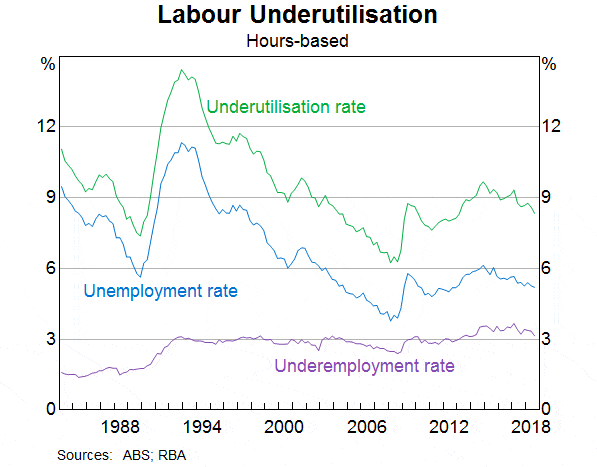
Those people are not unemployed, but the economy is not making full use of them either. The trouble for the economy is that a person who is under-employed is also earning less money than they desire (typically) and is thus constrained from participating as fully in consumption activities – like retail expenditure.
So, with concerns about unemployment in particular, and under-employment beside it, emphasis inevitably turns to wages growth.
When he turned to wages growth, Dr Debelle told the Citit audience:
“Given this spare capacity in the labour market, wages growth has been subdued.”
Dr Debelle points to several factors for slower wages growth, including low labour turnover, where inertia sees employees remain in jobs, thus reducing pressures on employers to increase wages.
There are signs of wages growth emerging, as the chart below shows.
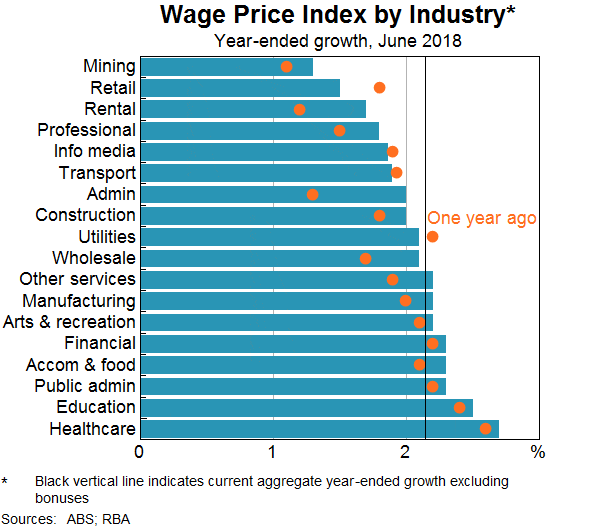
It seems improvements in the number of people in work, feeding into higher wages, may also be contributing to stronger retail sales growth. If that is true, it will also demonstrate that the fundamentals of consumption economics remain relatively sound.
